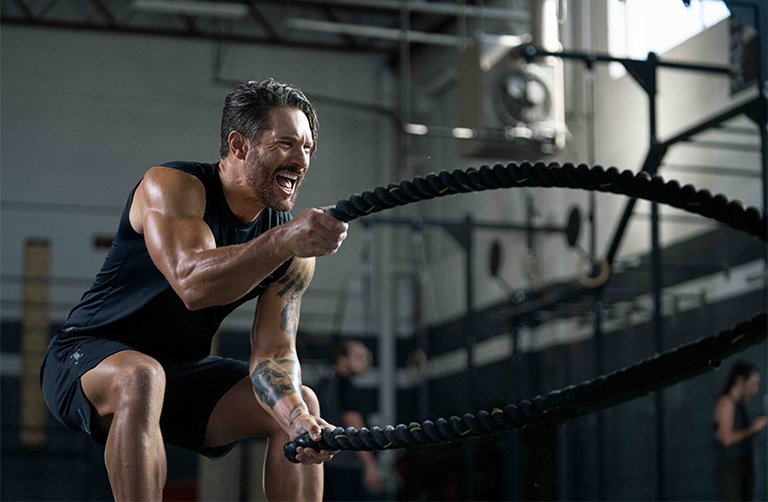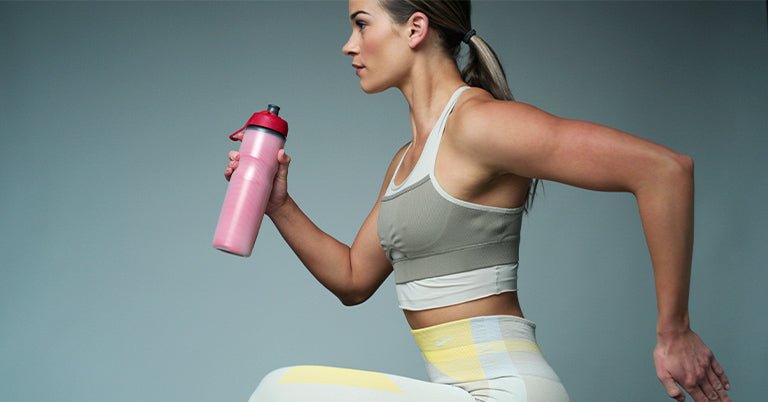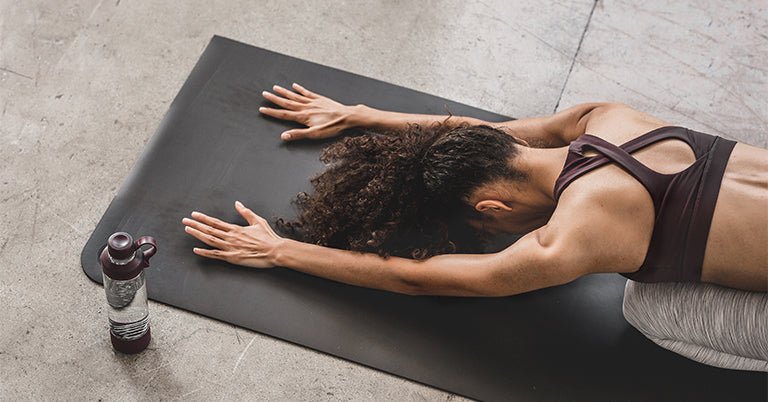The fitness acronyms just keep coming. WOD. HIIT. AMRAP. ROM. DOMS. And we could go on and on. But let's not. Let's hone in on HIIT for a hot minute. And let's take a look at how it compares to our old pal, cardio especially in terms of weight-loss goals.
To burn maximum calories during a workout, you have one of two choices. You can increase the intensity, or you can extend the duration. Unless you are secretly a superhero, you can't do both. You'll never be able to sprint for miles at a time. Going all-out in any discipline or redlining, as your most intense effort is often called can only be sustained for a few minutes at most.
Shorter, more intense workouts (aka HIIT) and longer, steady-state cardio sessions both have their pros and cons. So is one better for overall fitness and fat burning? Here's the scoop on HIIT training vs. cardio.

What is HIIT (High Intensity Interval Training)?
HIIT, or High Intensity Interval Training, refers to a workout focused on short intervals of high-intensity efforts. Upping the intensity of your training increases your heart rate, inversely allowing you to decrease your total workout time for the same caloric burn. For a HIIT session, we're talking intervals of at least 80% of your maximum heart rate (MHR), which you can calculate with this handy formula: 208 minus (0.7 x your age in years). For anyone short on time (i.e. most of us), the efficiency of a HIIT workout can't be beat.
Unlike steady cardio, a HIIT workout can boost your metabolism with its afterburn effect. This excess post-exercise oxygen consumption (EPOC) means you may still be burning fat after you leave the gym and are stuck at your computer. Studies have shown that the extra amount of calories burned per day when performing HIIT exercises can total up to 190, whereas steady cardio burns only 75.
HIIT workouts are certainly a successful tool for shedding pounds. Studies like this one point to HIIT as a key to quick and effective fat loss. Other benefits of HIIT include:
-
Increases natural metabolic rate (the afterburn effect)
-
Increases stamina
-
Improves strength
-
Relieves stress
-
Regulates blood sugar
In order to achieve high intensity during training, you need to get comfortable being a bit uncomfortable. You'll push your body outside your comfort zone for short intervals of time, which doesn't always feel good. This type of challenge can be intimidating enough so that some people will give up before they truly dig deep.

What is Cardio?
Cardio consists of steady-state exercise, typically performed over an extended period of time with your heart rate above 50% of your MHR. Steady-state cardio can be performed in a variety of ways. Many people opt for the treadmill, the elliptical machine, the rowing machine, or a bicycle. Lap swimming is another great example of cardio exercise.
If you perform a cardio exercise at a moderate intensity for 45-60 minutes or more, it's reasonable to expect a calorie deficit to help achieve the body composition you want. This approach can be preferable because, while the intensity is felt, it's not overbearing. It can even be meditative and relaxing. It's also typically easier on the joints and muscles, which decreases the chance of injury. Other common benefits of cardio exercise include:
-
Improves heart health
-
Decreases blood pressure
-
Increases overall fitness
-
Reduces risk of metabolic diseases
But there's one major drawback with the relative comfort of cardio: time. Not everyone has the time to devote an hour of their day to cardio, even if they want to. That's where fast-and-effective higher-intensity intervals come into play.
Which is Best: HIIT vs. Cardio?
The answer to this question has to come from personal experimentation and discovering what works for you in terms of excitement and motivation to exercise as well as tangible results. But if burning fat is your main goal, definitely include some intervals of higher intensity in your training plan.
It should be noted that in addition to specific HIIT or CrossFit-style workouts, you can include high-intensity intervals in the training disciplines you normally turn to for cardio. For example, short sprint intervals on the treadmill or all-out 25s in the pool will send your heart rate soaring.
Keep in mind that with any training, it's easy to hit a plateau if you stick to the same routine all the time. Instead, mix things up to keep your body guessing. Experts recommend adjusting the intensity, time, frequency, and type of exercises that you do. With that in mind, it's easy to understand why a combination of HIIT workouts and steady-state cardio may be the ideal way to go. For example, consider doing HIIT three times a week, cardio three times a week, and enjoying one day off for complete rest or easy active recovery. With this type of training schedule, you're bound to feel the burn, boost your muscle tone, improve your cardio health and fitness, and ultimately achieve your training goals.





Leave a comment
All comments are moderated before being published.
This site is protected by reCAPTCHA and the Google Privacy Policy and Terms of Service apply.